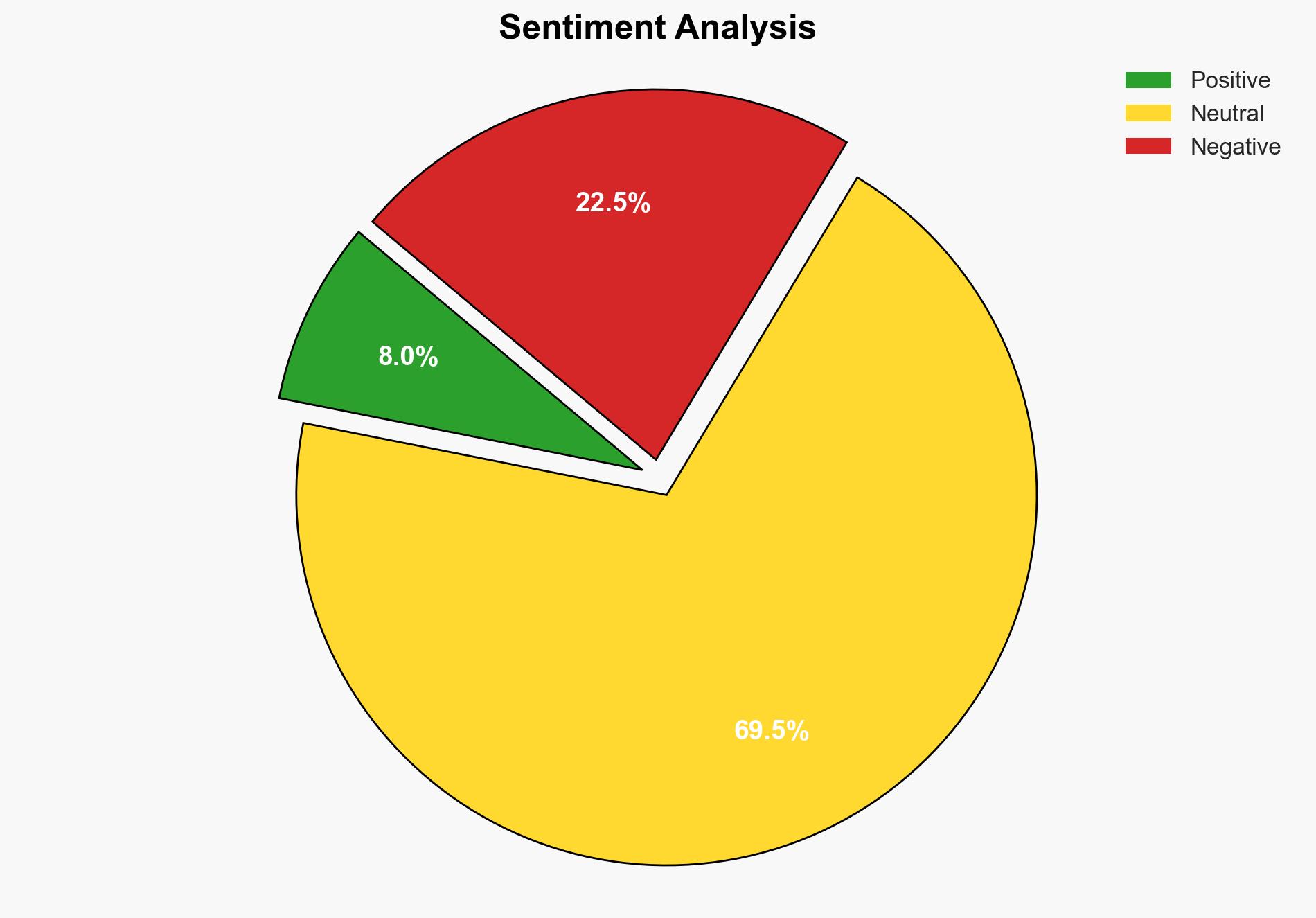Invisible Windows Rootkit Hides Dangerous Files Using This Prefix – Forbes
Published on: 2025-03-17
Intelligence Report: Invisible Windows Rootkit Hides Dangerous Files Using This Prefix – Forbes
1. BLUF (Bottom Line Up Front)
A newly identified rootkit, termed the “Invisible Windows Rootkit,” poses a significant cybersecurity threat by using a specific prefix to hide malicious files and processes. This rootkit is capable of bypassing conventional security measures, including email security protections, and can remain undetected by standard Windows tools. Immediate action is required to mitigate risks, especially for users of Gmail, Outlook, and cryptocurrency platforms.
2. Detailed Analysis
The following structured analytic techniques have been applied for this analysis:
General Analysis
The rootkit employs advanced obfuscation techniques, including the use of a specific prefix to hide files and registry entries. It leverages social engineering tactics, such as fake CAPTCHA tests, to initiate the attack chain. The rootkit operates in user mode, avoiding kernel modifications, which makes it particularly elusive. Researchers Iuzvyk and Tim Peck have detailed the attack methodology, highlighting its ability to integrate deeply with legitimate Windows processes and services.
3. Implications and Strategic Risks
The rootkit’s ability to remain undetected poses significant risks to national security, particularly in sectors reliant on Windows-based systems. The potential for widespread disruption in critical infrastructure, financial systems, and personal data security is high. The rootkit’s evasion of traditional security tools necessitates an urgent review of current cybersecurity protocols.
4. Recommendations and Outlook
Recommendations:
- Enhance user awareness and training on social engineering tactics, particularly regarding fake CAPTCHA scams.
- Implement advanced monitoring tools capable of detecting user mode rootkits and obfuscated malware.
- Encourage organizations to review and update their cybersecurity frameworks to include protections against user mode threats.
Outlook:
In a best-case scenario, increased awareness and improved detection tools will mitigate the rootkit’s impact. In a worst-case scenario, failure to adapt to this threat could lead to significant breaches and financial losses. The most likely outcome involves a gradual adaptation of security measures, with ongoing threats as attackers evolve their tactics.
5. Key Individuals and Entities
The report highlights the contributions of Iuzvyk and Tim Peck in uncovering the rootkit’s methodology. Their research is crucial for understanding and mitigating the threat posed by this advanced malware campaign.




